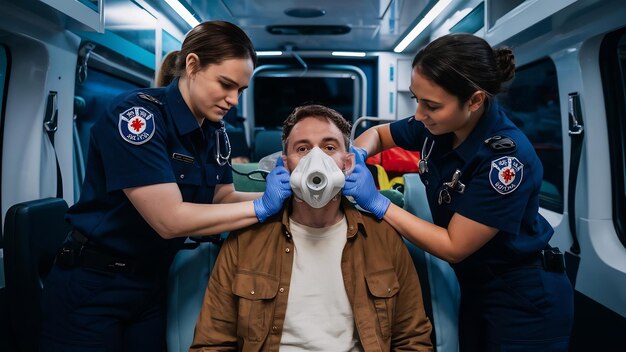Emergency Medical Services (EMS) play a vital role in providing immediate care to individuals facing life-threatening situations. From heart attacks to accidents, EMS professionals ensure rapid and effective medical assistance. This article delves into how EMS functions, its importance, and the critical role it plays in saving lives.
What Are Emergency Medical Services (EMS)?

EMS refers to a system that provides emergency medical care to people in urgent situations. It involves trained medical personnel, including paramedics, emergency medical technicians (EMTs), and dispatchers, who work together to deliver swift and effective care.
Key Components of EMS
- Emergency Dispatch Centers: Receive calls for assistance and coordinate the response.
- Ambulances and Response Vehicles: Equipped with life-saving equipment and staffed by EMTs or paramedics.
- Hospital Emergency Departments: Provide further medical care upon the patient’s arrival.
- Specialized Teams: Such as air ambulances and search-and-rescue units.
How EMS Works

EMS systems operate through a well-coordinated chain of events designed to minimize response time and maximize patient survival rates.
- Emergency Call and Dispatch: When a medical emergency occurs, people call emergency numbers like 911. Dispatchers assess the situation and send appropriate units to the scene.
- On-Site Medical Care: EMTs and paramedics provide initial treatment, which may include CPR, wound management, or medication administration.
- Transport to Medical Facilities: Patients are transported to hospitals for further care.
- Continuity of Care: EMS professionals communicate with hospital staff to ensure seamless patient transfer.
Importance of EMS in Life-Saving Situations
- Immediate Response: Rapid response times are crucial in emergencies like cardiac arrests, strokes, and severe trauma.
- Advanced Life Support: Paramedics provide advanced medical interventions, including airway management and defibrillation.
- Stabilization: EMS teams stabilize patients to prevent further health deterioration.
- Reduced Mortality: Timely medical care significantly improves survival rates.
Technologies in EMS
Modern technology has greatly enhanced EMS operations. Some advancements include:
- GPS and Real-Time Navigation: Enables quicker response to emergencies.
- Telemedicine: Allows paramedics to consult with doctors remotely.
- Electronic Health Records (EHR): Provide instant access to patient information.
- Mobile Medical Equipment: Portable ventilators, defibrillators, and diagnostic tools improve on-site care.
Training and Qualifications of EMS Professionals
EMS personnel undergo rigorous training to handle a variety of medical emergencies. The primary levels include:
- Emergency Medical Responders (EMRs): Provide basic life support.
- Emergency Medical Technicians (EMTs): Perform advanced procedures like CPR and oxygen therapy.
- Paramedics: Offer advanced life support, including drug administration and intubation.
Challenges Faced by EMS

While EMS is critical in saving lives, the sector faces several challenges:
- Resource Limitations: Some regions lack adequate ambulances and medical supplies.
- Traffic and Geographic Barriers: Delays due to congested roads or remote locations.
- Workplace Stress: EMS professionals often experience physical and emotional strain.
- Training Gaps: Continuous education is necessary to stay updated with medical advancements.
How the Public Can Support EMS
- Learn CPR and First Aid: Knowing basic life support techniques can save lives before EMS arrives.
- Provide Clear Information: When calling emergency services, give detailed information about the situation.
- Yield to Emergency Vehicles: Ensure that ambulances and other EMS vehicles have clear access to the scene.
Also Read : Understanding Common Medical Tests And Their Importance
Conclusion
Emergency Medical Services are the backbone of healthcare systems during critical situations. Their ability to provide immediate, life-saving care makes them indispensable in communities worldwide. By understanding their role and supporting their efforts, we can ensure that EMS continues to save lives.
FAQs
1. What is the difference between an EMT and a paramedic?
EMTs provide basic medical care, while paramedics offer advanced treatments like administering medications and performing advanced airway management.
2. How quickly should EMS arrive during an emergency?
The ideal response time for EMS is under 8 minutes in urban areas. Response times may vary in rural or remote regions.
3. Can anyone call EMS?
Yes, anyone can call EMS during a medical emergency by dialing the appropriate emergency number.
4. Are EMS services free?
EMS services may incur charges depending on the region and the level of care provided. Some insurance plans cover these costs.
5. What should I do while waiting for EMS to arrive?
Stay calm, provide first aid if possible, and follow any instructions given by the dispatcher. Ensure the patient is in a safe position and monitor their condition.

